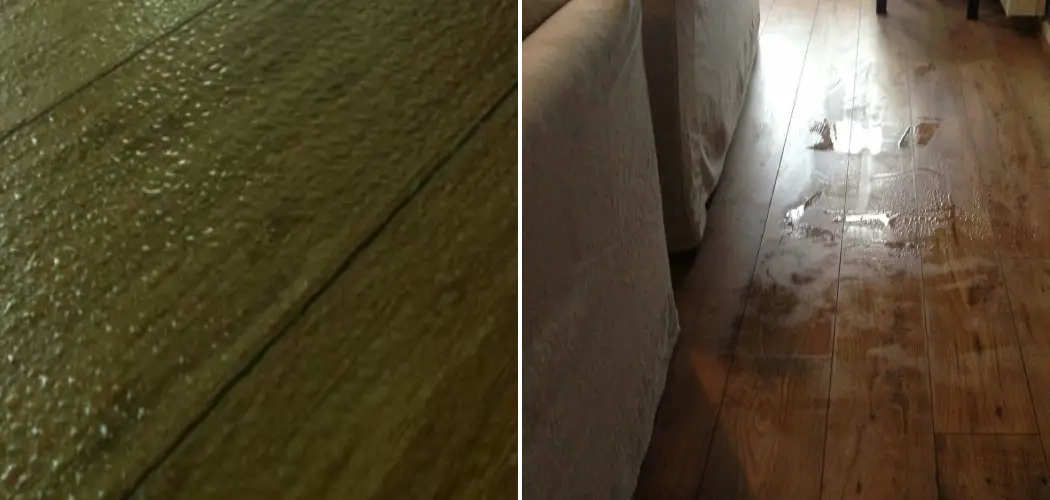Have you ever noticed beads of water droplets forming on recently laid tiles? If so, then the chances are that you’re dealing with a condensation problem. High levels of moisture combined with cold flooring can cause significant damage to your tile if left unchecked. To save yourself time and money in the future, it’s best to start tackling this issue as soon as possible—but where do you begin?
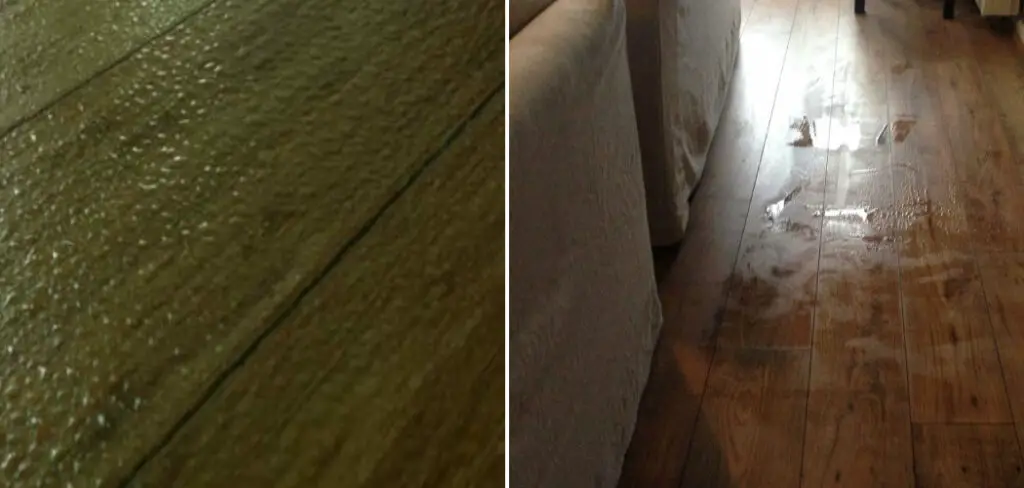
In this blog post, we’ll explain everything you need to know about how to stop condensation on floor tiles. We’ll cover the causes of condensation and easy-to-follow methods you can use to combat it.
8 Best Methods on How to Stop Condensation on Floor Tiles
1. Ensure Proper Ventilation:
The first step in combating condensation is to ensure that your home has proper ventilation. Make sure windows and doors are opened regularly, and consider adding vents or fans to help reduce moisture levels. Ensuring that your house is well-ventilated can significantly reduce the occurrence of condensation.
2. Use a Dehumidifier:
Using a dehumidifier in areas where there is high humidity can be an effective way to reduce condensation on floor tiles. This will help absorb excess moisture from the air and keep it away from your floors. Using a dehumidifier is a great way to reduce the amount of condensation around your home.
3. Seal Leaky Pipes:
Leaky pipes can be a major contributor to floor tile condensation. To prevent this from happening, it’s important to seal any leaking pipes or joints as soon as possible. This will help keep moisture away from your floors and reduce the occurrence of condensation. While sealing pipes is a simple job, it’s best to leave it to the professionals if you’re not comfortable doing it yourself.
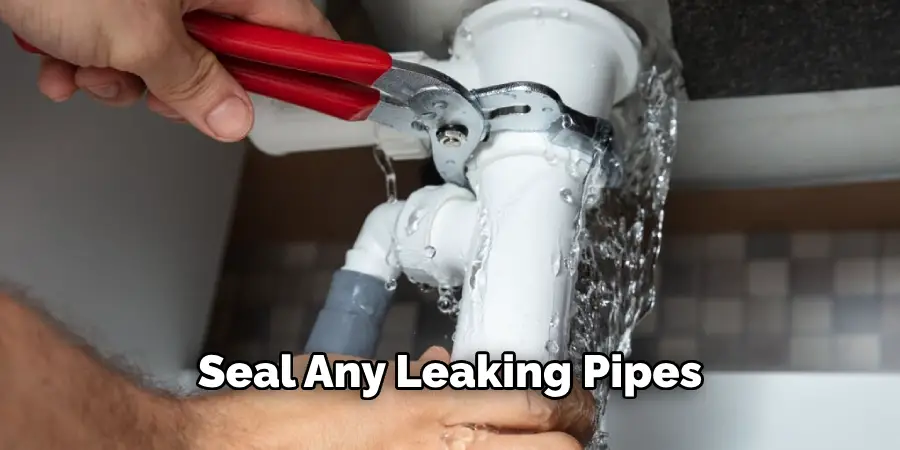
4. Use an Underlayment:
Using an underlayment on your floor tiles can help prevent condensation from forming. An underlayment will act as a barrier between the tile and the subfloor, which reduces the amount of moisture that can seep through. This is a great way to reduce the amount of condensation on your floors and keep them dry.
5. Use an Anti-Fungal Coating:
Applying an anti-fungal coating such as paint or sealer to your floor tiles can help prevent condensation from forming. These coatings create a barrier between the tile and the subfloor, which reduces the amount of moisture that can seep through. This is an effective way to reduce condensation and keep your floors dry.
6. Use Insulation:
Using insulation on your floor tiles can also help prevent condensation from forming. By insulating your floors, you’ll be able to keep the temperature of the tile constant, which will reduce the amount of moisture that can seep through. This is a great way to reduce condensation and keep your floors dry.
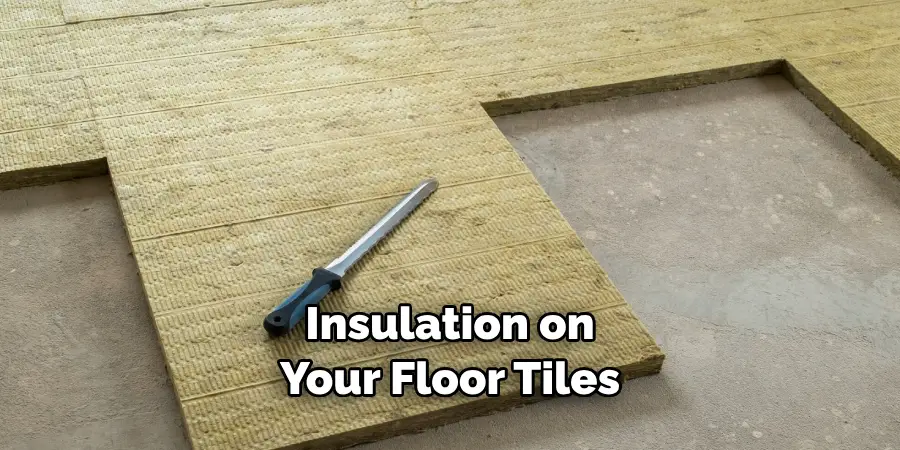
7. Repair Cracks:
If you notice any cracks in your floor tiles, it’s important to repair them as soon as possible. Small cracks can be easily filled with a cement or epoxy mixture, while larger cracks may require professional repair. Repairing any cracks in your floor tiles will help prevent condensation from forming.
8. Keep Humidity Levels Low:
Finally, it’s important to keep humidity levels low in order to reduce condensation on floor tiles. This can be done by using fans and dehumidifiers to keep the air circulating, or by using a humidifier to maintain a comfortable level of humidity in your home. This will help reduce the amount of condensation on your floors and keep them dry.
By following these 8 tips on how to stop condensation on floor tiles, you can be sure that your tiles stay dry and free from damage. However, if you’re still having trouble with condensation, it’s best to contact a professional for help. They can assess the situation and provide the right advice for your particular needs.
Additional Tips and Tricks to Stop Condensation on Floor Tiles
- Use a dehumidifier to reduce the moisture in the air. This will help stop condensation from forming on your floor tiles.
- Try using thicker rugs and carpets over your tile floors, as they can act as an insulation layer and prevent cold air from reaching the tiles directly.
- Seal the edges of doorways, windows, and other openings in your home to reduce the amount of moisture entering the house.
- Make sure that you keep any vents or radiators clear from furniture and curtains to ensure that warm air can circulate properly throughout the room.
- 5. If your floor tiles are exposed to direct sunlight, this can help reduce condensation due to increased ambient air temperature.
- Open the windows when showering or bathing to let out steam and heat. Also, make sure you use a fan in your bathroom or kitchen.
- Check for any water leaks, as this can contribute to condensation as well as other problems such as mold growth.
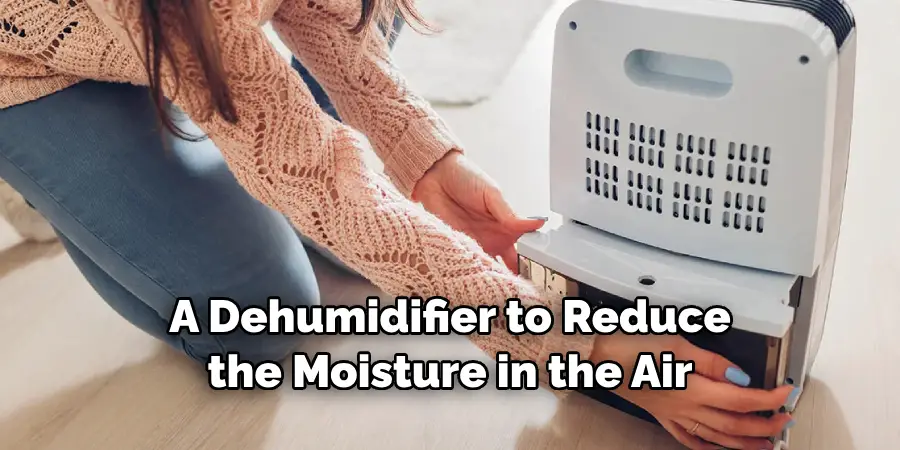
By following these simple tips and tricks, you can help keep condensation at bay and maintain a healthy living environment. Condensation on floor tiles is an annoying problem, but it doesn’t have to be a permanent one.
With the right strategy and precautions, you can make sure your home stays dry and comfortable no matter what season it is. So don’t wait any longer – start fighting back against condensation today!
Things You Should Consider to Stop Condensation on Floor Tiles
1. The Condition of Your Home:
If your home is not well insulated or if it has an issue with poor air circulation, this can cause condensation to form on your floor tiles. Inspecting the windows and doors in your house for Drafts and cracks that allow external moisture inside will help reduce the risk of condensation forming on the floor tiles.
2. Humidity and Ventilation:
Humidity levels in the home should be around 35-50%. If not, you can use a dehumidifier to help regulate humidity levels within your home. Proper ventilation is an important component of reducing condensation on floor tiles as well. Installing air exchange systems or opening windows periodically will help keep moisture levels low and reduce the formation of condensation on your floor tiles.
3. Routine Cleaning:
Cleaning your floor tiles regularly with a damp mop will help keep the moisture off of them and can reduce the chances of condensation forming on the tile surfaces. Additionally, natural stone tiles are especially prone to having condensation form on them and should be sealed with a protective sealant after installation to prevent potential water damage.
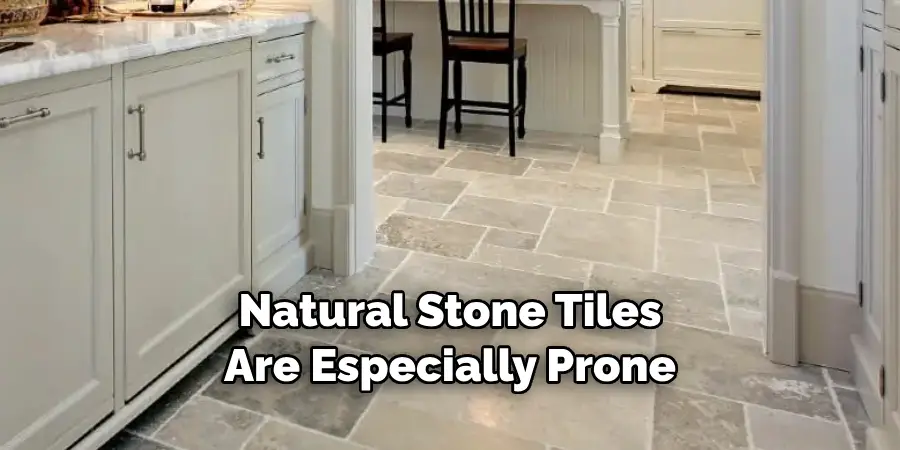
4. Heating and Insulation:
If your house is not properly insulated it can be a contributing factor to condensation forming on floor tiles. Installing an insulation system that meets the recommended standards for your area can help reduce the risk of condensation forming on your floor tiles.
Additionally, having a heating system that runs at regular intervals during cold weather can help keep your house warm and reduce the formation of condensation on the floor tiles.
By considering these points and taking proper preventative measures, you can help stop condensation from forming on your floor tiles and keep your home comfortable.
Frequently Asked Questions
What is Causing Condensation on My Floor Tiles?
Condensation is caused by a buildup of moisture in the air. This can be due to poor ventilation, high humidity levels, and temperature difference between the surface of the tile and the surrounding air.
What Are the Risks of Having Condensation on My Floor Tiles?
The presence of condensation can cause mold and mildew growth, which can be damaging to your health. It can also damage the tiles themselves, leading to staining, discoloration, or even structural damage over time.
What Are the Best Ways to Clean Condensation From Floor Tiles?
To clean any condensation from your floor tiles, you should wipe them down with a cloth and warm water. If there’s mold or mildew present, you can use an antifungal cleaner in combination with a scrub brush or sponge. For tougher stains, you may need to use a stronger cleaning solution such as vinegar or bleach. Ensure that the area is well-ventilated when using these and take care to follow instructions carefully.
What Are the Long-Term Solutions for Condensation on Floor Tiles?
The most effective long-term solutions are to reduce moisture in the air and improve ventilation. Use a dehumidifier or air conditioning unit, as well as an extractor fan when showering or cooking to help manage humidity levels. Additionally, make sure any leaks are fixed promptly and that windows are being opened regularly. If you’re still struggling with condensation, consider replacing your tiles with ones that have better insulation properties.
Conclusion
Keeping your floor tiles free of condensation can help keep your home feeling fresh, and it is also an important part of protecting the integrity of the tile itself. With the techniques we have outlined here, you can learn how to stop condensation on floor tiles and be undamaged for years to come.
From ensuring proper humidity levels inside your home to insulating pipes and running a dehumidifier, there are plenty of steps you can take to prevent condensation from building up on your tiles. Use these tips and tricks to keep moisture at bay in your own home!

